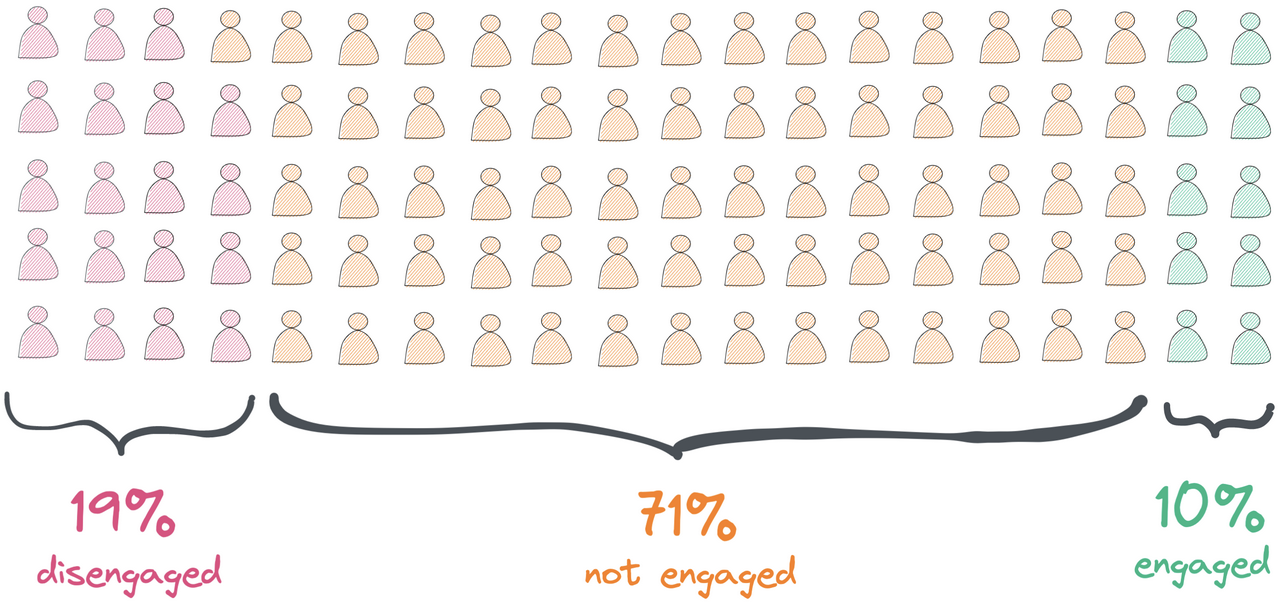Disengaged employees: the priority?
There's a famous Gallup survey on employee engagement. If you are interested in this topic, you have undoubtedly read articles mentioning it.
This study presents a distribution of the average workforce that looks like so:

10% of employees are engaged at work. Another 71% are not engaged, and 19% are actively disengaged.
Engaged employees are the ones who go the extra mile. They motivate their colleagues and are ambassadors of your company, helping the business and recruiting new people.
Employees within the "not engaged" group trade their time for money. They do their job, but their commitment to your organization's goal is low.
Actively disengaged employees are unhappy working for your company and should seek new opportunities elsewhere.
It can be tempting to spend considerable effort to address the disengagement problem.
How could a leader be satisfied with 19% of the team actively disengaged?
But that would be a mistake, a waste of energy. It takes a lot of effort to swing someone disengaged to a group with a higher level of engagement. Let alone making them properly engaged.
And the time spent on these disengaged individuals is stolen from the rest of the team, who also need leadership guidance.
Great leaders spend most of their effort on the 81% of people who can be motivated and influenced to be more engaged. They use frequent communication to build trust and involve people in their decisions.
They know that the company's global engagement will put systemic pressure on the disengaged people. It will lead them to reconsider their involvement at work or push them to seek a new job.